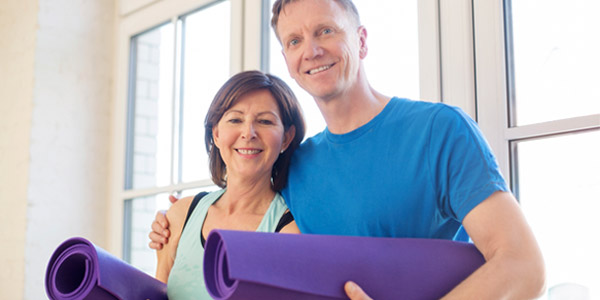More than 80 percent of Americans report experiencing low back pain at some time in their lives, and they spend billions of dollars annually on back pain relief. But you can help your aching back with just a few simple self-care practices. If you’re laid up in bed, missing work and other important life events, try these complementary measures to get your back on track.
Keep Moving
A 2016 study published in JAMA Internal Medicine shows that exercise reduced the risk of repeated low-back pain in the year following an episode between 25 and 40 percent. And it didn’t really matter what kind of exercise—core strengthening, aerobic exercise, or flexibility and stretching were all effective choices.
“Anyone who has had severe back pain wants relief right away,” says Dr. Toni Brayer, a Sutter Health network internal medicine physician in San Francisco who specializes in sports medicine. “Physicians want to help, and telling a patient to stay active is a tough sell. But that is exactly what will work.”
Brayer recommends stretching and walking once acute pain has passed, and she typically prescribes ice treatments alternating with hot baths to help reduce muscle spasm. She also prescribes non-narcotic pain relievers and recommends nonsteroidal anti-inflammatory drugs like ibuprofen as a top choice over Tylenol.
"The worst thing you can do is take to the chair or couch," Dr. Brayer says. "The muscles atrophy fast and worsens the back problems."
If patients are reluctant to try exercise, Dr. Brayer may start them on a physical therapy program to give them some confidence. "Once the acute spasm has passed," she says, "there are a number of core exercises and leg and torso strengthening exercises that really work."

Try Yoga, Stretching or Pilates
Weekly yoga classes or intensive stretching work equally well to reduce low back pain and improve movement, according to a 2011 study published by The Archives of Internal Medicine.
When choosing a yoga class, try one that emphasizes body alignment and positioning, such as Iyengar or hatha yoga. Avoid vinyasa or flow yoga if you have acute back pain because the pace of those classes may put you at risk for further injury.
Dr. Brayer also likes Pilates classes for preventing back pain. "Pilates has been shown to relieve chronic back pain and works to prevent recurring back pain episodes by strengthening core muscles," she says.
For yoga, Pilates or stretching, be sure to seek classes that are therapeutically oriented, geared for beginners and taught by instructors who can modify postures for your particular physical limitations.
Get a Massage
Massage therapy may be one of the most soothing choices of care for back pain, yet doctors often overlook prescribing it because many insurance companies don’t cover it.
A study published in the Annals of Internal Medicine showed people who received massage over a period of 10 weeks were twice as likely as those receiving usual care to report significant improvement in both back pain and mobility that lasted six months.
But don’t make the mistake of substituting massage for exercise. The benefits of massage, when combined with a strengthening exercise program, can provide lasting results instead of just temporary relief.
"My patients who get massage for musculoskeletal conditions do better and use less pain meds," Dr. Brayer says. Many of her patients report relief from their back pain with massage, but say the results don’t last. For lasting results, Dr. Brayer suggests pairing massage therapy with an exercise program to strengthen the back, gluteal and leg muscles.
Source:
Sutter Health
Toni J. Brayer, M.D.
Sutter Pacific Medical Foundation
Toni J. Brayer, M.D.
Sutter Pacific Medical Foundation
No comments:
Post a Comment